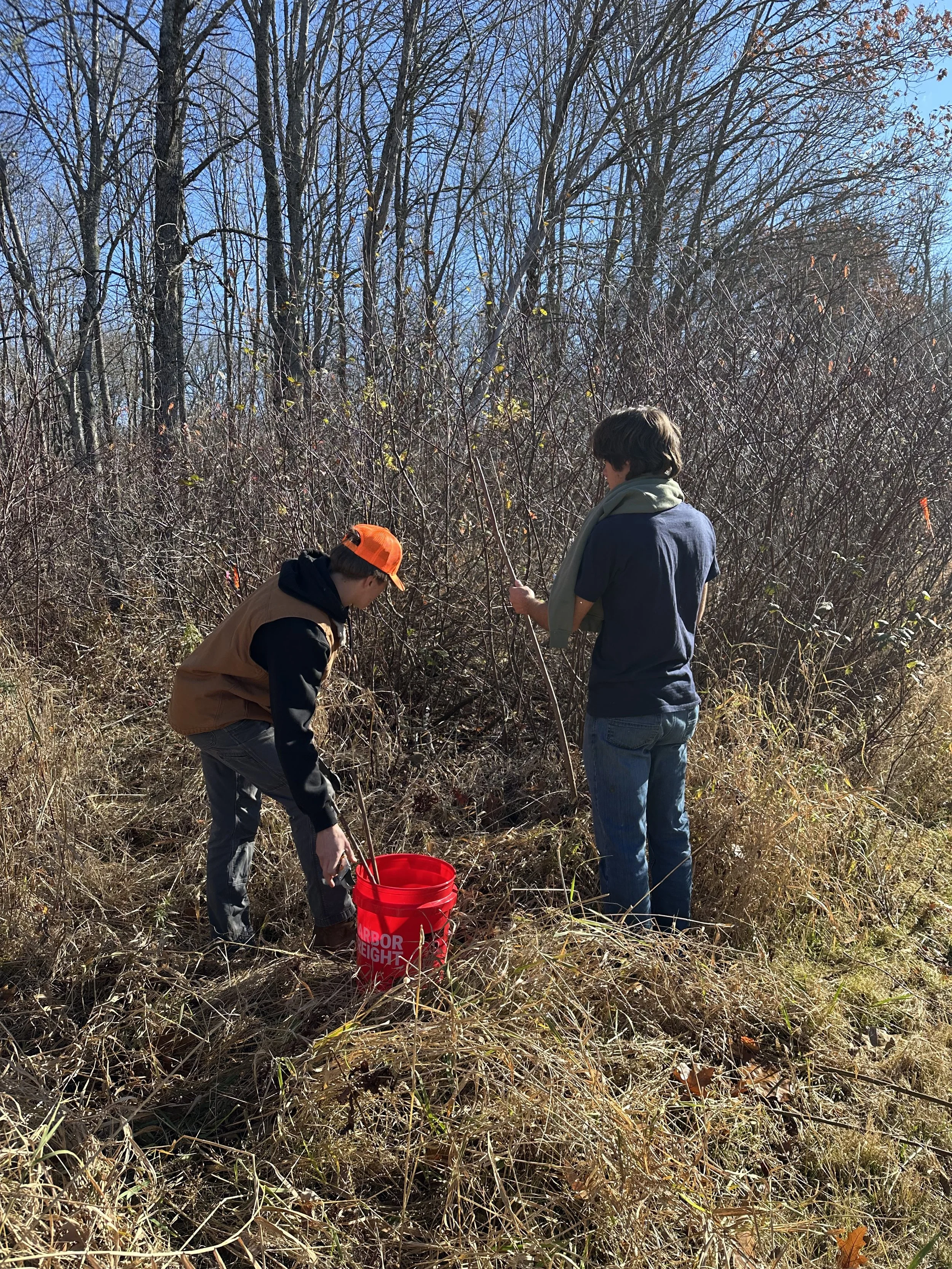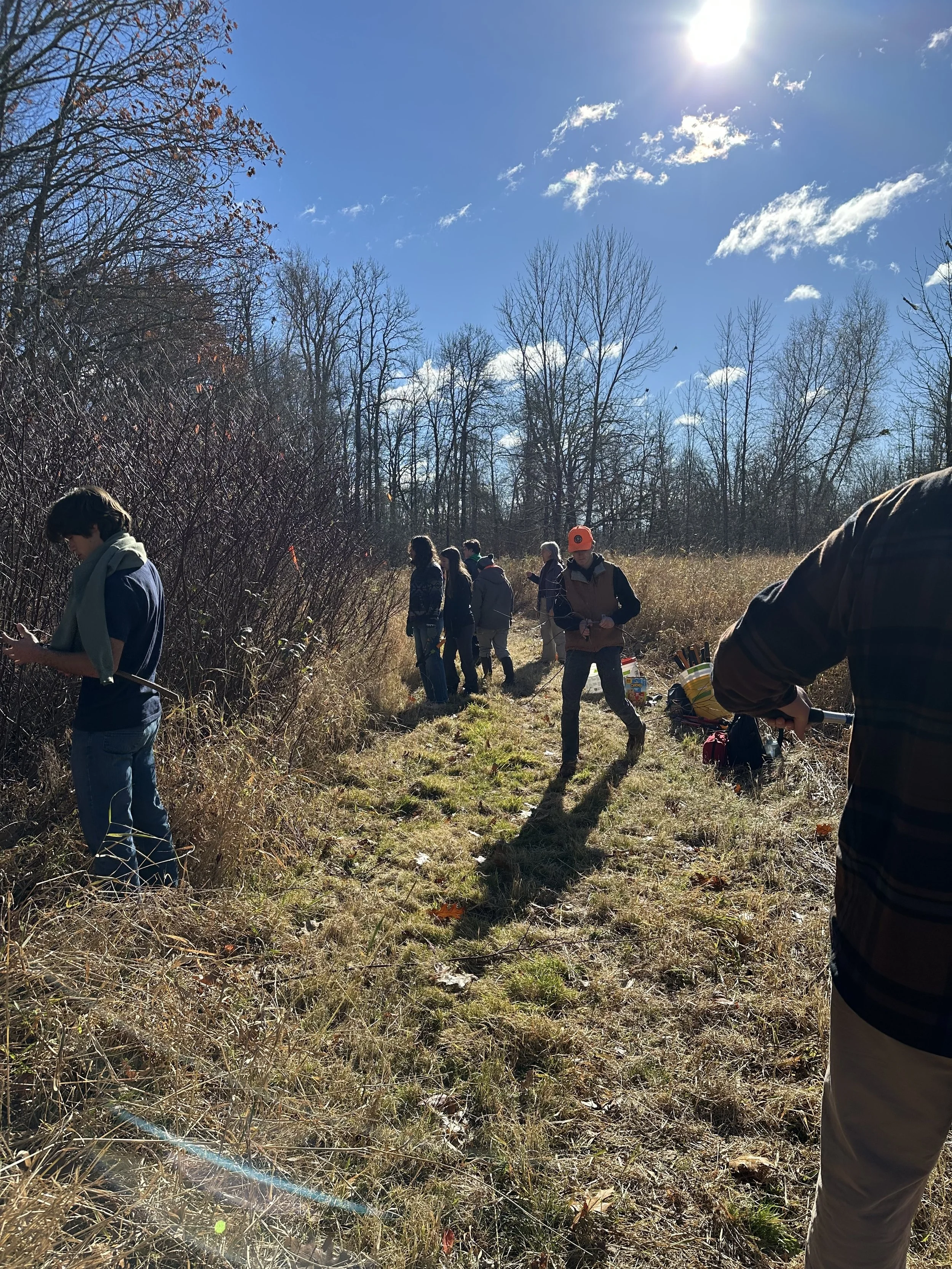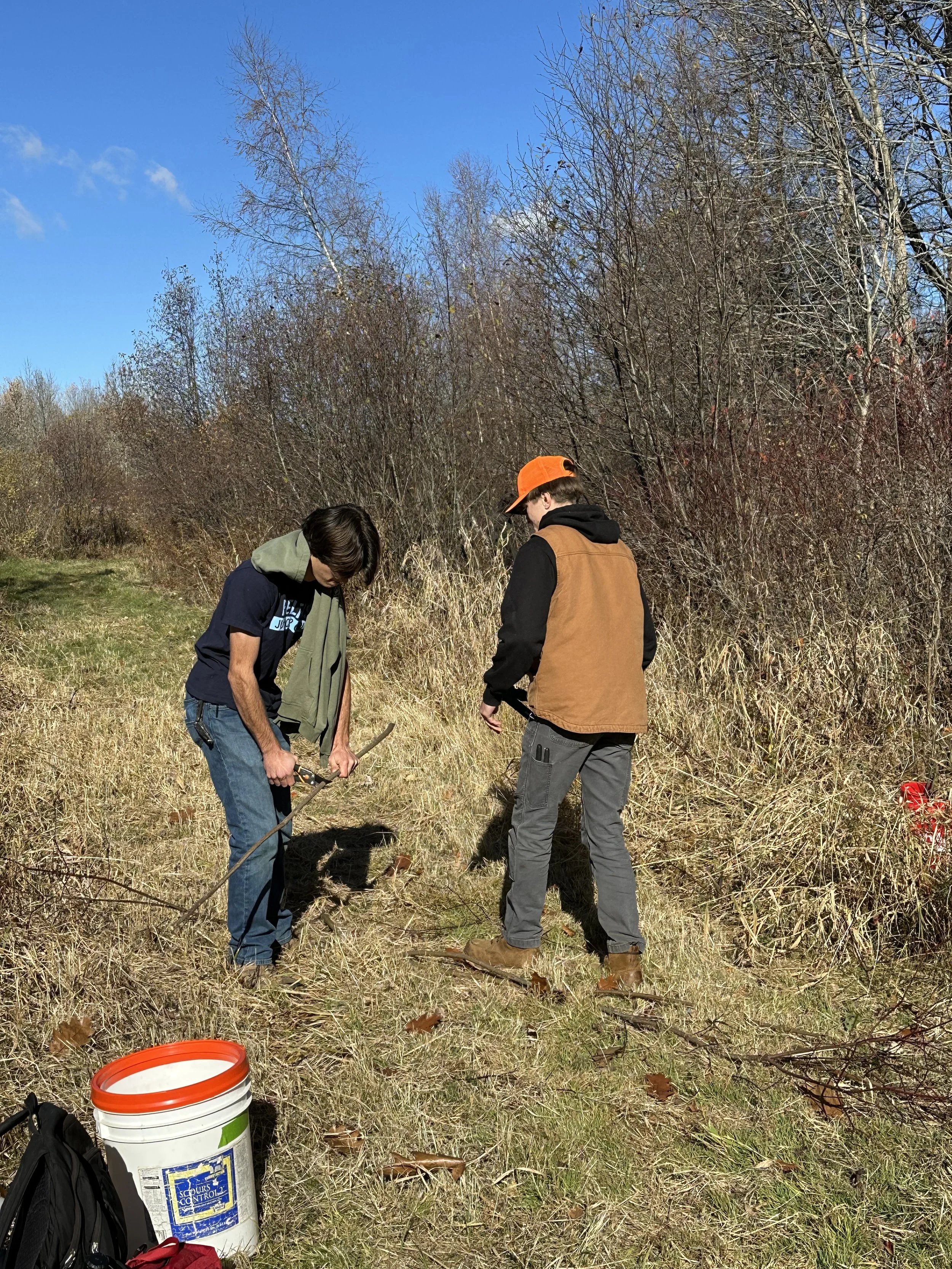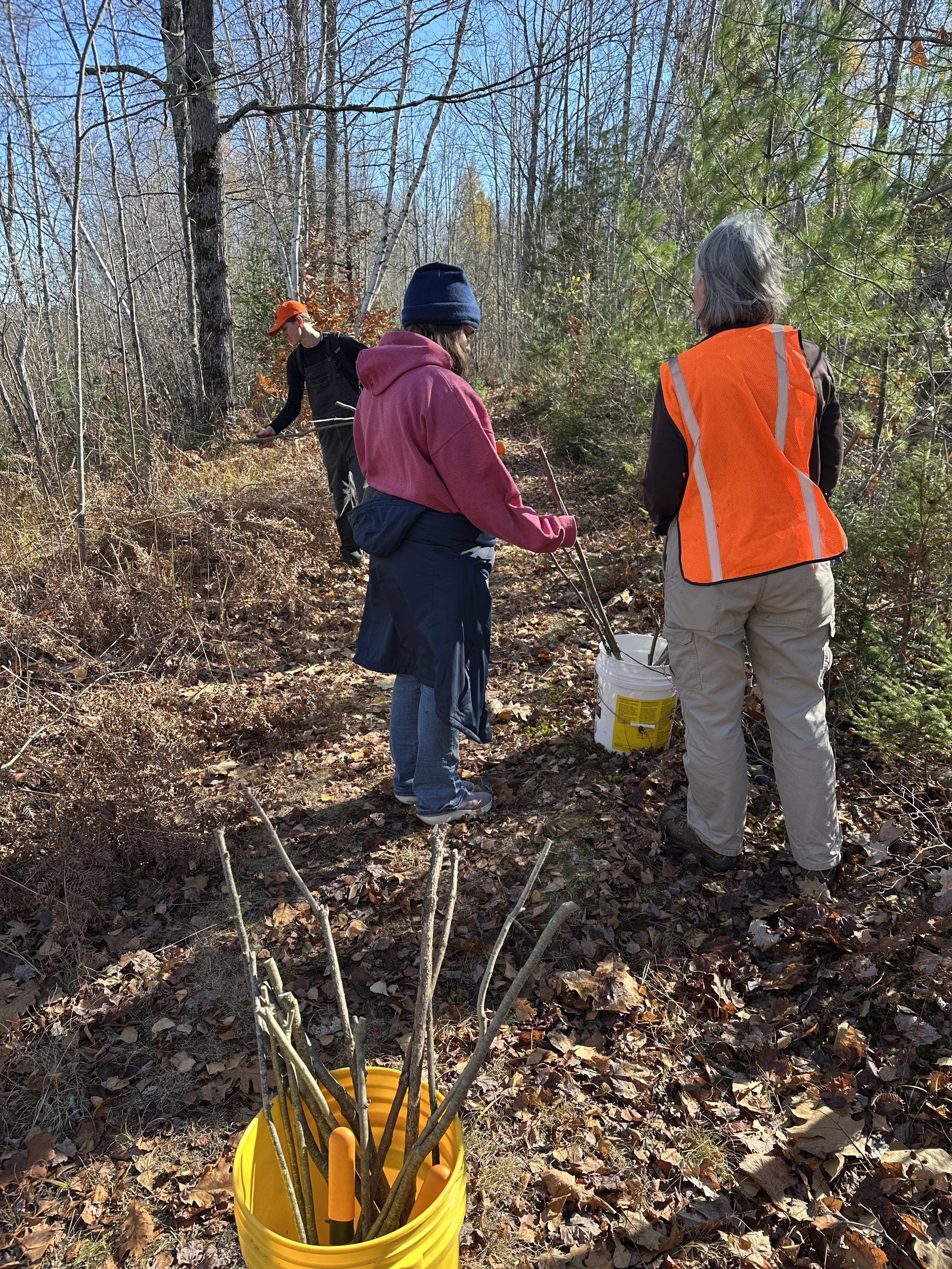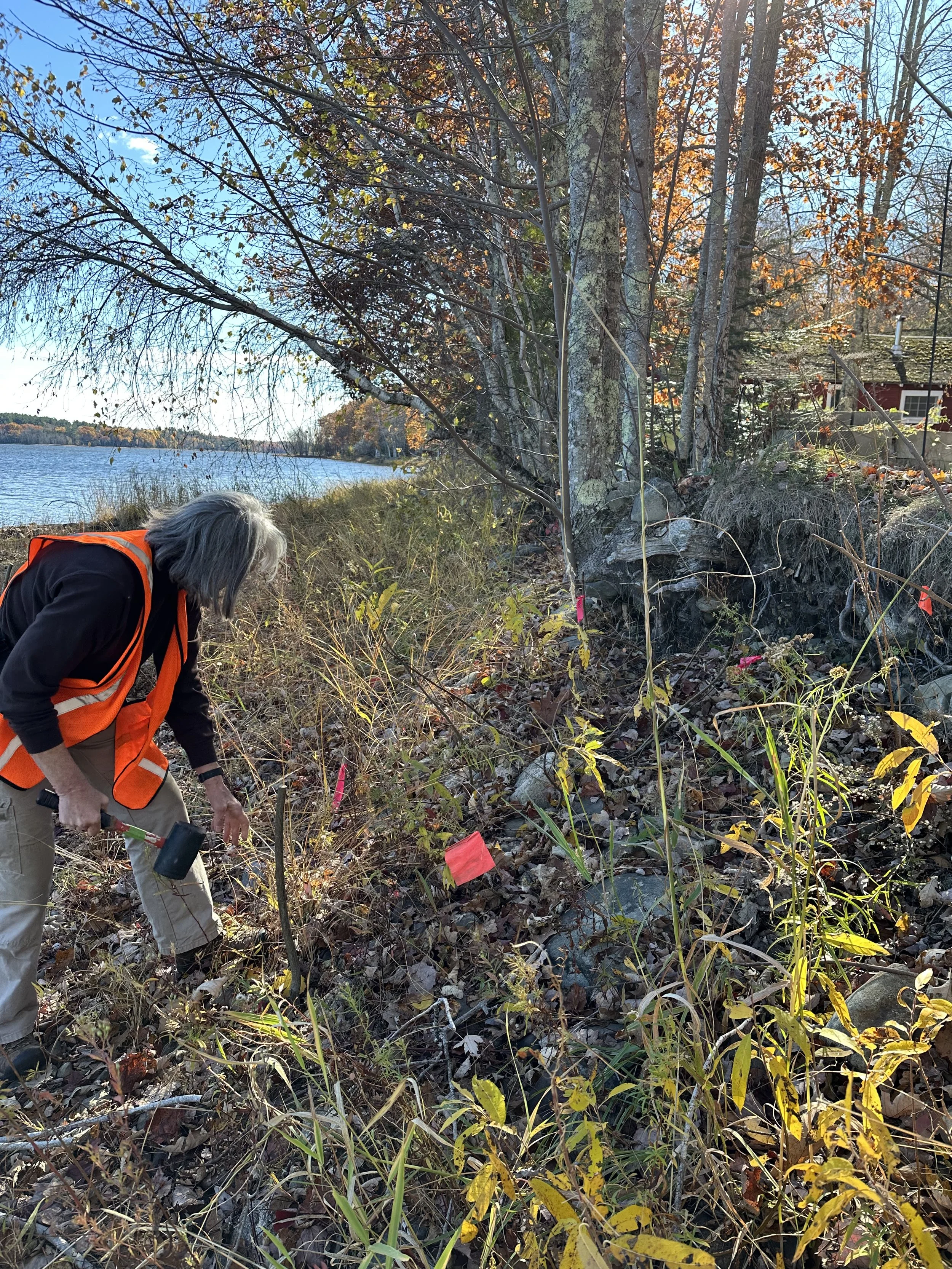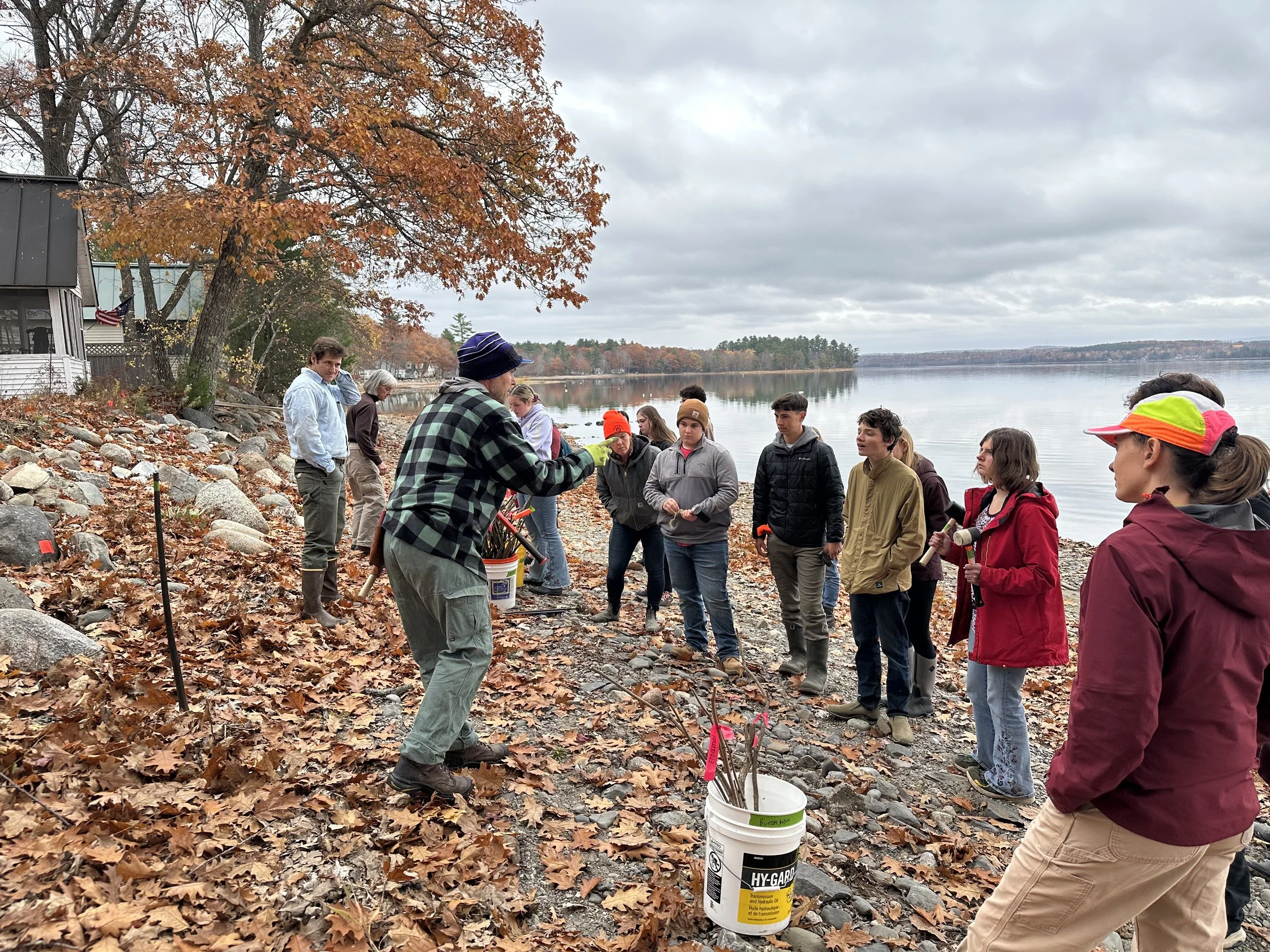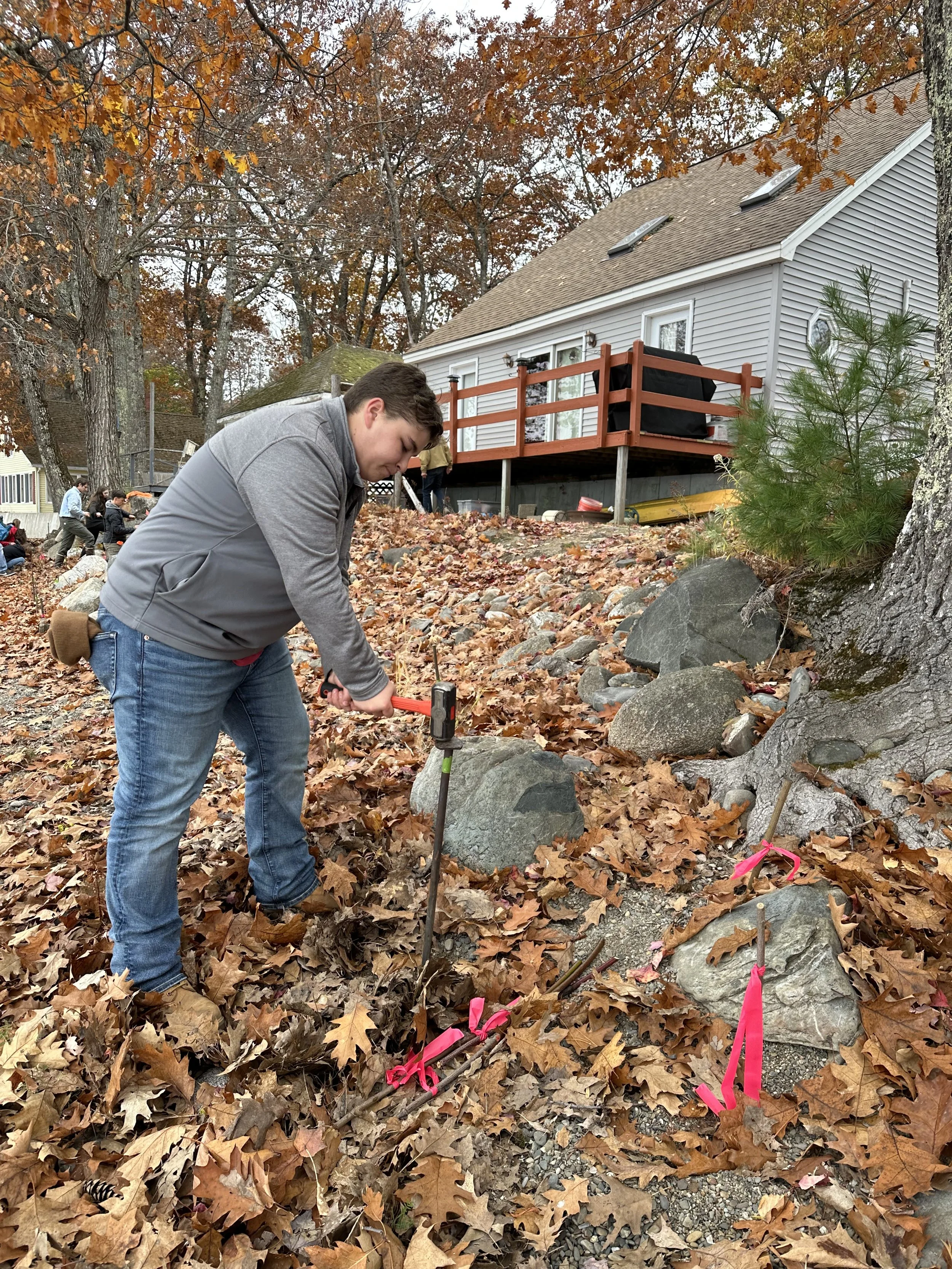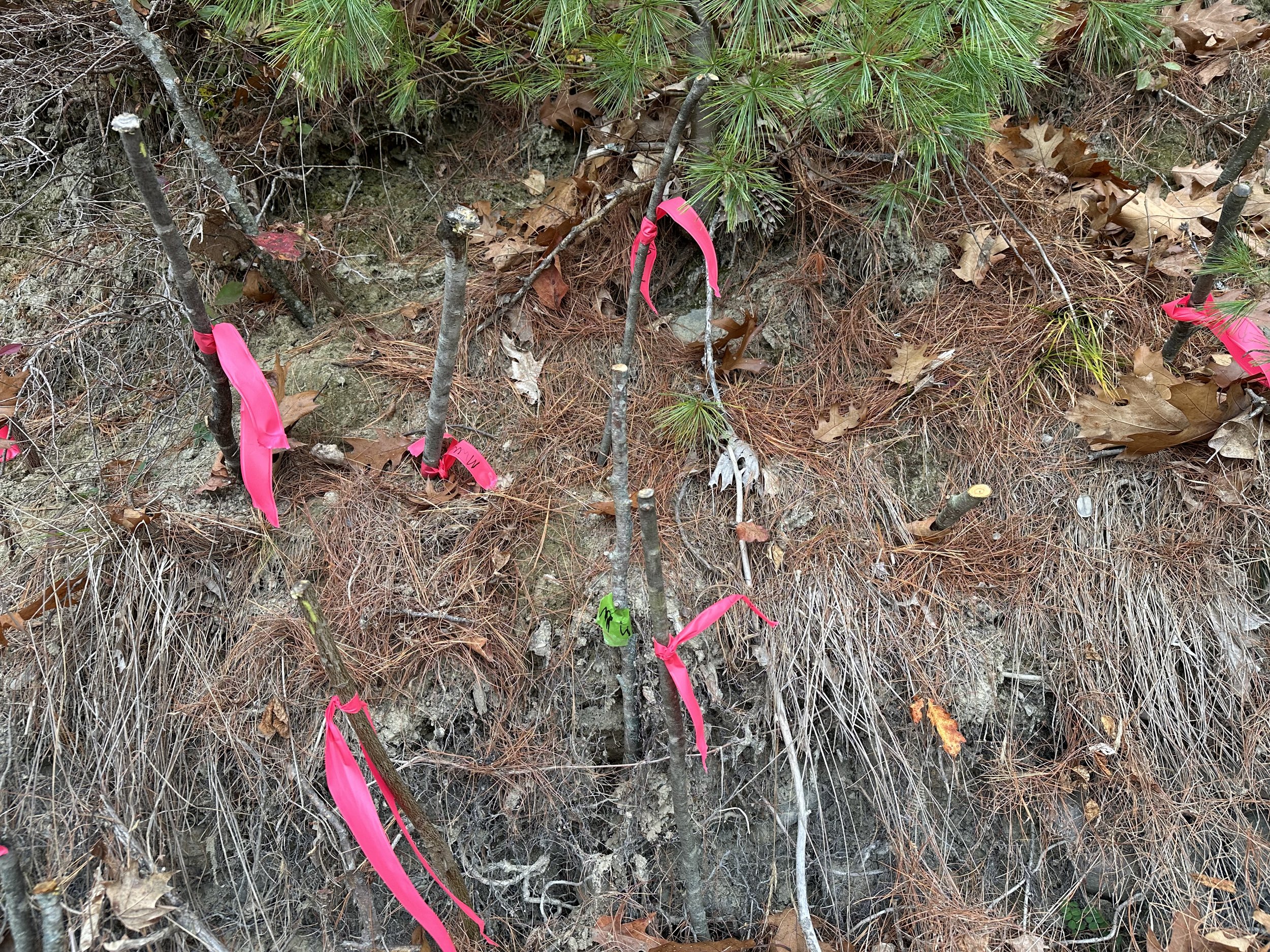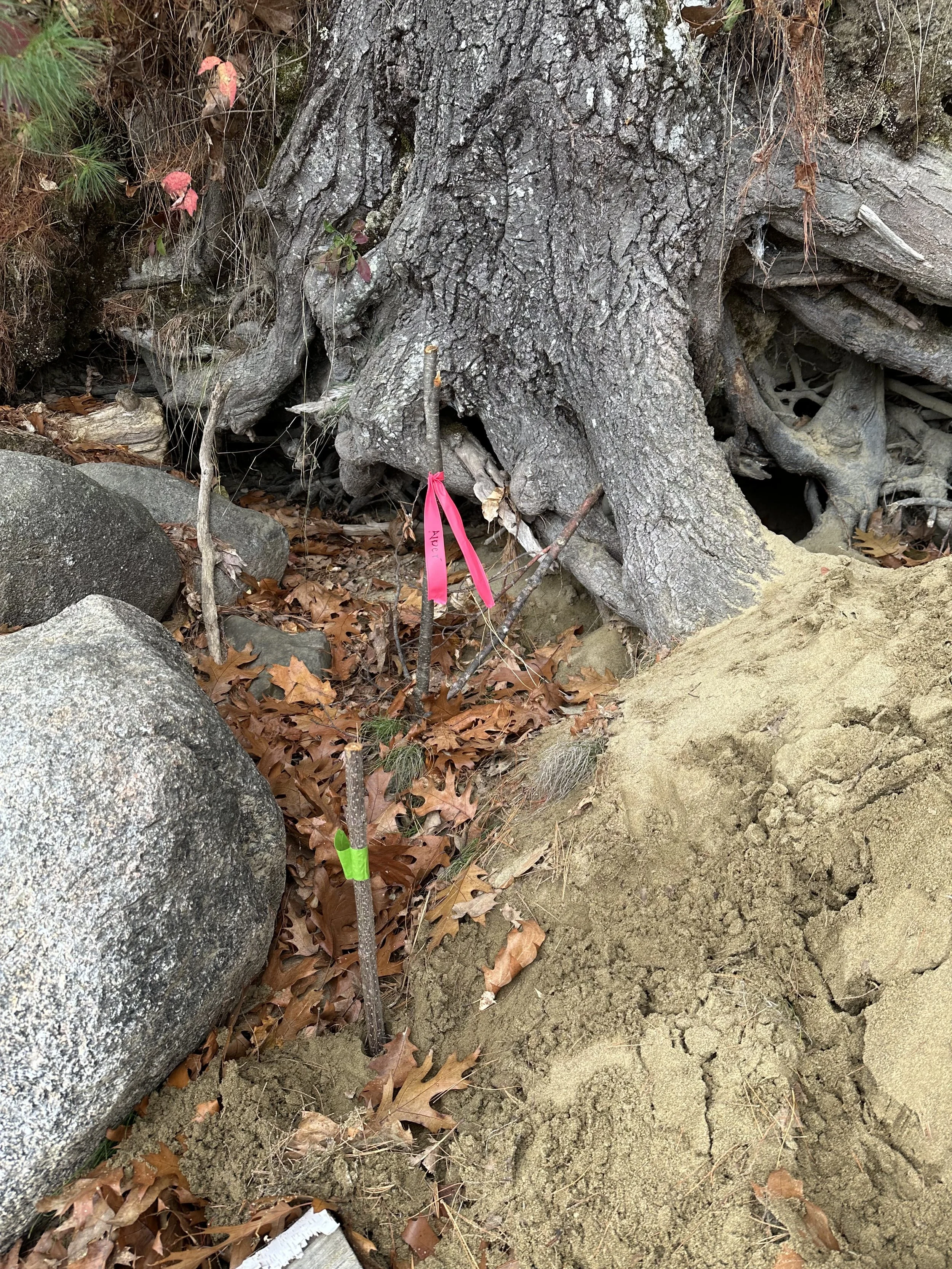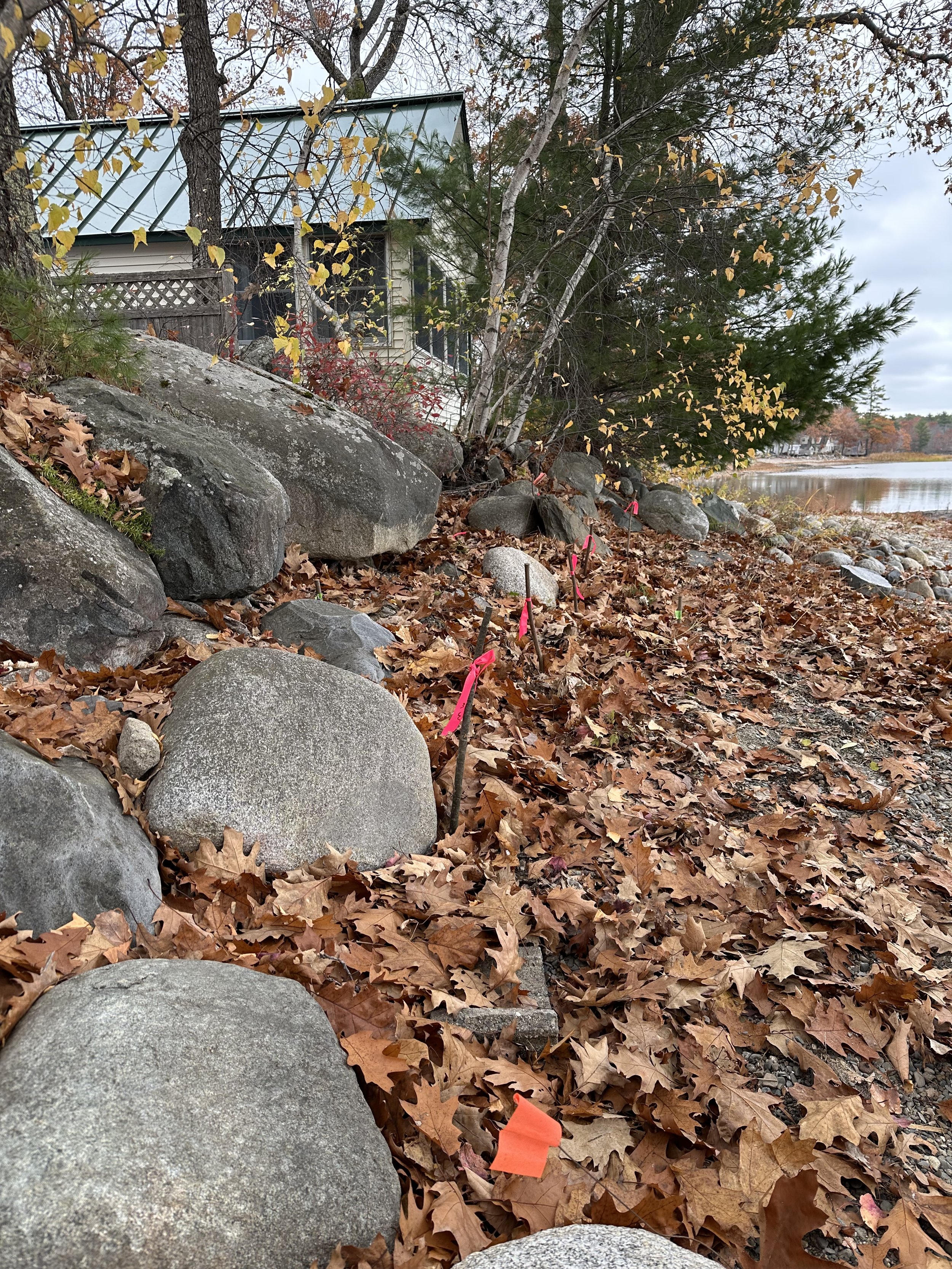How Native Plants Help Heal Our Waters
- Recap of the Live Stake Harvesting & Planting Series –
October 2025
Growing Roots for a Healthier Shoreline
Certain native trees and shrubs have an impressive ability to regrow from cuttings planted directly into the soil. Known as “live staking,” this simple technique helps prevent erosion, improves habitat, and supports cleaner water. In our community, it’s also become a collaborative effort — connecting students, landowners, and conservation professionals through shared learning and hands-on restoration.
What We Planted
We selected native species that thrive under different conditions—some love the sun, while others prefer shade. We harvested our live stakes from the Moulton Mill Preserve along Twenty Five Mile Stream in Unity — a site rich with healthy native shrubs perfect for propagation.
The stakes were then planted on five properties along the Burnham shore, in partnership with landowners who wanted to prevent further erosion and support the broader effort to improve water quality in Unity Pond. Over the next year, we’ll monitor how the plants establish and grow as part of a small experiment to see which species perform best under different site conditions—information that will help guide future shoreline restoration work.
Live staking works best with species that root easily from cuttings, especially those naturally adapted to life along streambanks and lake edges. The species we used — including Buttonbush, Elderberry, Winterberry, Red Osier Dogwood, Alder, Meadow Willow, and Arrowwood Viburnum — all thrive in moist soils and help stabilize eroding banks. Their root systems strengthen the shoreline, while their branches slow water flow and trap sediment, reducing erosion and protecting water quality. These plants also provide habitat and food for birds, pollinators, and other wildlife, adding ecological value far beyond erosion control. Together, they form a living buffer that connects the land and water in a healthy, resilient shoreline ecosystem.









Expert Guidance in the Field
We were fortunate to have several knowledgeable partners join us:
- Tommy Diehl and Cheryl Daigle (Sebasticook Regional Land Trust) led our harvesting day at the Trust’s Moulton Mill Preserve in Unity, ME, along Twenty Five Mile Stream.
- Parker Gassett (Maine Climate Science Information Exchange) joined us at Unity Pond, teaching students from the Ecology Learning Center about live staking and why it’s a simple yet powerful way to protect shorelines.
- Jordan Kimball (Maine DEP) helped teach students about erosion control and introduced them to the OUR SHORE program. As the Non-Point Source Training Center’s Assistant Coordinator, Jordan also shared insights on career opportunities in environmental restoration.
- Jen Jesperson, Abby Quinn (EcoInstincts), and Mary Ann Hayes (Friends of Lake Winnecook) co-hosted and coordinated planting designs, ensuring the right species were selected and planted effectively.
Students Making a Difference
Two classes from the Ecology Learning Center—led by teacher Kate Coseo—rolled up their sleeves to help with both harvesting and planting. Their enthusiasm and teamwork made the work not only productive but joyful. For many of the students, the event offered a chance to connect classroom learning with hands-on conservation. A few shared their thoughts afterward:
“It was really interesting to meet and work alongside environmental professionals.”
“I think it was cool that we were able to do something to actually help Unity Pond. I'm excited to come back in the spring and see how many of the stakes survived being transplanted.”
Why It Matters
Live staking is a simple, low-cost, and sustainable method for reducing erosion, improving wildlife habitat, and keeping our lakes and streams clean. By planting cuttings of native species directly into eroding banks, we’re not just stabilizing soil — we’re rebuilding living shorelines. These plants grow deep root systems that hold the soil in place, filter runoff before it reaches the water, and create habitat for birds, pollinators, and aquatic life. Over time, the stakes become part of a self-sustaining system that protects both the land and the lake.
Funding for this project, in part, was provided by the U.S. Environmental Protection Agency under Section 319 of the Clean Water Act. The funding was administered by the Maine Department of Environmental Protection in partnership with EPA.
In Partnership With
Waldo County SWCD • Friends of Lake Winnecook • Sebasticook Regional Land Trust • Ecology Learning Center • University of Maine • Maine DEP


